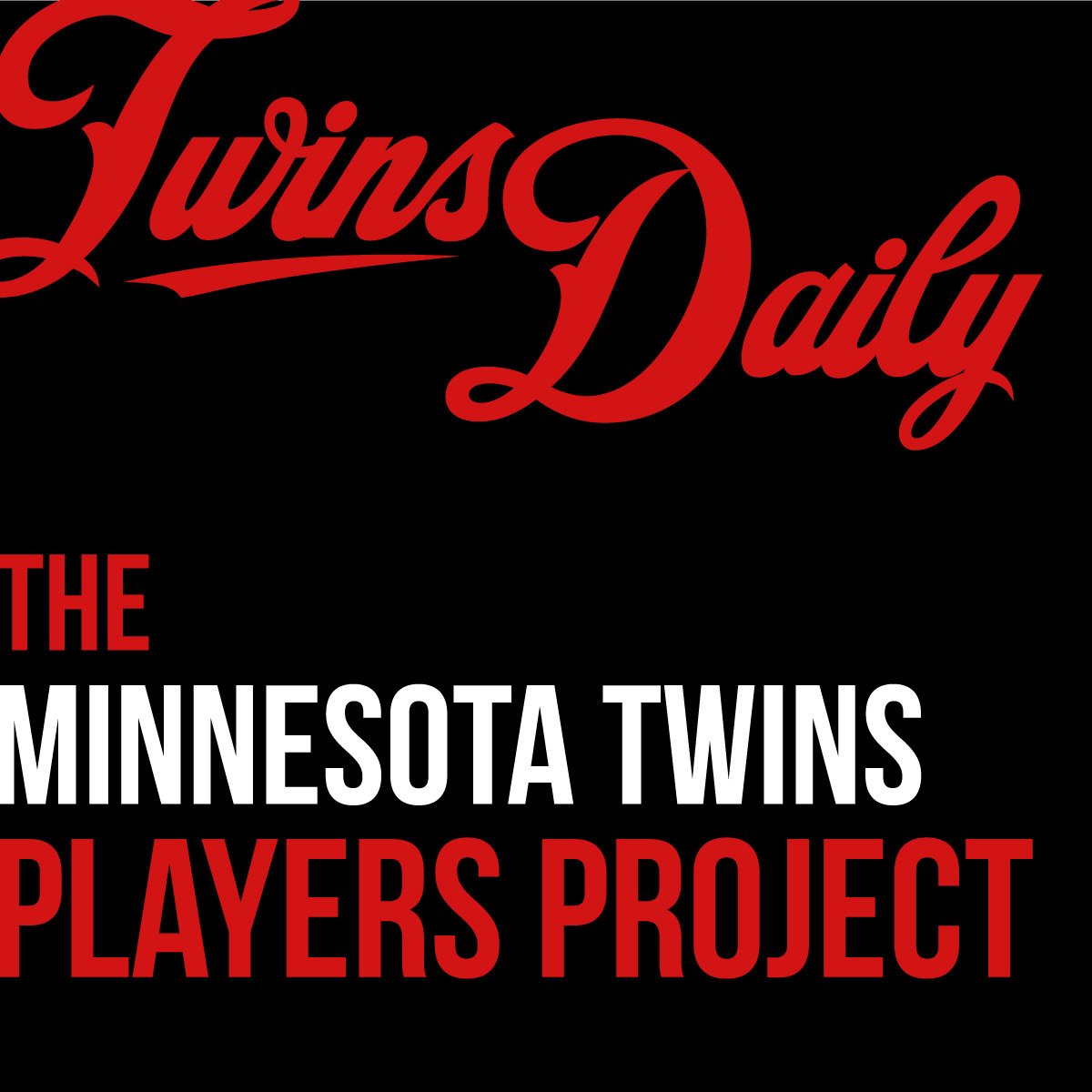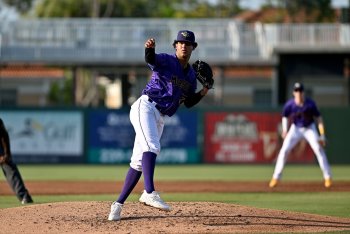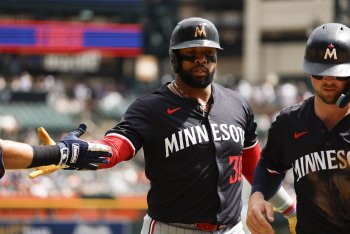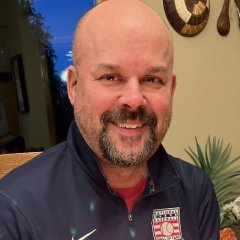
Twins Video
When a sports fan hears that a player on their favorite team is unavailable or late to a season because of “visa issues,” their mind seems to default to Hollywood scripts with the player in a back alley of a dodgy third world country, sweet talking a fat guy smoking a stogie between games of canasta. My personal experience, having processed over 500 such visas, is that little is known about the day to day processes most foreign-born athletes have to go through to get travel and work authorization to enter the United States.
Then, when a situation happens like Dominican pitcher Fernando Romero’s now famous attempt to smuggle marijuana into the country, or off-the-field behavior like Sidney Ponson dealt with following an assault charge in his native Aruba, the “misbehavior” tag begins to be more readily applied to players awaiting visa issuance in their home country after the open of camp. But the truth is that the vast majority of visa delays, especially during a pandemic where consulates and embassies around the world are closed or short-staffed, are simply that – delays. They are often caused by bureaucratic headaches more than anything to do with the applicant. These same delays affect heads of Fortune 500 companies, families wishing to visit DisneyWorld, or even crewmembers on airplanes and cruise ships.
For baseball players, while the skids are usually greased far more than they would be for you and I applying to work abroad, challenges can still present themselves on frequent occasions. Remember that MLB and its minor league affiliates have a higher percentage of athletes from poorer countries than any of the other major sports leagues. (The MLS is the only comparable league in American sports). As a result, its clubs have become more familiar with not only documentation issues arising from availability and legitimacy of birth certificates, criminal records checks, and even passports, but also a heightened degree of scrutiny among US consular and border officials in places like the Dominican Republic, Venezuela, Curacao, and Mexico than would be found in Canada or Western Europe.
With that in mind, let’s take a look at the standard process a foreign-born athlete deals with once they agree to play for a team.
The P-1 Petition
While not every baseball player has a P-1 visa, the vast majority do. The P-1 is available specifically to: “a professional athlete employed by: (1) a team that is a member of an association of 6 or more professional sports teams whose combined revenues exceed $10,000,000 per year, if the association governs the conduct of its members and regulates the contests and exhibitions in which its members regularly engage, or (2) any minor league team that is affiliated with such an association.” As such, nearly any foreign athlete who signs a contract with a Major League Baseball team is eligible for a P-1, issued for five years or the length of the contract, whichever is shorter. While some apply for heightened visas (allowing them to stay year round) or even green cards due to their level of play, the vast majority use the P-1 classification.
When a player signs with a new team in the offseason, or even if they re-sign with their old employer after their previous entry period expired, that team must file a “Petition for Nonimmigrant Worker” with the Department of Homeland Security to secure approval in the classification for the athlete. From a timing perspective, this is generally done concurrently with, or immediately after signing the player and adding them to the roster, to ensure that they meet the DHS requirement that a contract be enforceable at the time the Petition is filed.
The sponsor or “Petitioner” of a P-1 Petition is the team itself. In almost all cases, it’s the team who signs the P-1 Petition and then an agent or immigration lawyer (like myself) ushers it through the process. For a $2500 fee to the government, this Petition can be expedited with DHS for adjudication within 15 calendar days, and often major league teams see that time shortened down to the better part of a week to ten days. But during the pandemic, the full 15 day period has become more common as in-office staffing at the agency has been reduced and workers have been moved offsite.
Interestingly, when a player is traded midseason, the P-1 classification enables the player to play for the new team automatically for 30 days, allowing time for the new Petition to be filed by the new team. As we will see in the next section, the interplay between the Petition and the issuance of a visa can lead to challenges at the border for newly traded athletes, which comes into play in the rare instance the Twins would be playing in Toronto in late July or early August (or through some less common situations I’ve seen arise and mention below). But, with only one Canadian team in baseball, the issue can usually be avoided in baseball better than it can, for example, in the NHL.
Consular Visa Issuance
Once the P-1 Petition is approved, and the hard copy approval notice issued to the team (which can again be delayed in 2021 due to staffing issues), the Department of Homeland Security then notifies the consular post at the foreign athlete’s country of residence. Note that this not always the country of their passport or country of birth, such as with Cuban players who have taken residence in the Dominican Republic, or a player who may sign from the Blue Jays who has been living in Canada) but it most commonly is.
As you can imagine, this means the Embassy in Santo Domingo, Dominican Republic is quite familiar with P-1 visas for baseball players and generally tries to beef up staff in January and February of a given year to deal with the rush. However, the process of filing the visa paperwork online and getting a visa appointment is not always straightforward. Even in a standard year, a player may have to wait two to three weeks for a visa appointment, and since March 2020, when most consular posts have either been closed completely or offering limited services, even emergency requests such as are available to professional athletes are extremely limited.
As an example, most Twins fans are now becoming familiar with, the Embassy in Willemstad, Curacao, a country of less than 160,000 people, is likely prepared to issue less than five to ten visas a day TOTAL. This includes anyone wishing to travel to the United States for personal or business tourism, anyone with a work authorized visa such as an athlete or worker moving to the US, and even those traveling through the United States en route to a third country. With limited flights out of Curacao, many locals fly through New York or Miami to get to Europe, for example, and they all require physical visas to transit through our country.
What does this mean? That even in the best of times, clubs, agents, and immigration attorneys are often forced to wait in line to get their athlete into the building to have his visa issued. This year? If a player signed after January 1, they likely didn’t have an approval until close to February 1, and are even more likely not to have their day at the Embassy until mid-February.
While we hope that athletes are prepared with all the documentation required to get their visa on the day, it also happens on occasion (primarily to younger minor league players) that they don’t have the requisite passport photos, forgot to bring the copy of the receipt for visa payment (which was probably made on their behalf), or simply left some portion of the Petition packet (as they generally carry a copy of the entire 50-80 page Petition and approval notice with them) at home.
This won’t result in them having to get back in line to make a whole new appointment, but it can delay things a few days until the consulate can see them on a walk-in basis, especially considering COVID restrictions. Once the approval is finalized, however, they can expect the visa to be physically printed in their passport (and that of their family members) and delivered to them within a few days.
While this is a fairly pro forma process and is derailed generally only by a situation where the athlete was arrested in the offseason (which often requires a stateside review of the charges to assess their seriousness and therefore, whether they can result in a bar to entry to the US), it still can have delays – everything from a passport expiring too soon to a delay in the cabling (yes, the DHS literally still sends approvals to their offshore counterparts in the Department of State by “cable”) of the approval.
These things happen all the time and are part of the common parlance of any foreign national working in the United States. Do athletes have less of this than the stories you hear about your coworker’s cousin? Undoubtedly – but they still are quite common and frequent.
Once the athlete receives the visa, annotated with the name of the employing team on it, it’s time to pack up and fly. In the case of Spring Training, they usually leave the next morning with a duffel bag or travel sized suitcase and quite commonly arrive ahead of their family members who the team works with to pack up the majority of their belongings that they will need for the season.
The Border
With a P1 visa in tow, the rest of the process should be easy, but as anyone who has ever crossed an international border knows, it is not necessarily over with. This is the lesson that Fernando Romero learned last year when he had a legitimate visa but was identified with carrying a controlled substance over the border, a “crime” (literally and figuratively) that now requires him to apply for a waiver of his prohibition on entering to enter the United States, potentially preventing him from entering the United States for as long as a few years.
I can also name a half dozen cases where I’ve been called by teams because a guy missed a domestic US court appearance while he was outside of the country. Or, as I inferred in the first paragraph, a player took a quick trip to meet with his family in Mexico on an off day in Dallas after having been traded, forgetting that he required a new visa to enter the United States even though he didn’t need it to stay and work.
Less serious border issues are usually a delay of an hour or two, such as when I traveled with a major leaguer into the US from Curacao last year and the computer couldn’t match his with those he had given earlier in the offseason at the consulate. (He was signed in November, so was able to take care of it early). It took almost 90 minutes before a US border official acknowledged that the callus he had formed on his index finger from his throwing workouts were the cause.
I hope this quick primer, which is essentially the same that I offer to teams, agents, and new athletes, has helped the reader understand the three-step process involved in a player changing teams and securing the right to join his new team at the start of a season. Again, if the signing doesn’t happen until after January 1, it can be a very tight window to get the visa prior to the opening of camp.
In the case of Andrelton Simmons in 2021, he signed January 31, likely didn’t have everything available for review by the consulate before about February 20, and is likely to have his day in Willemstad, Curacao any day now, following on the footsteps of his countrymen who either re-signed late in the offseason or changed teams, like Didi Gregorius and Jurickson Profar, respectively. When that happens, all will once again be right in the world.
Cory Caouette is Managing Partner of BSIS, a professional immigration firm with a reputation for securing visas for foreign athletes. Who's Who of Corporate Immigration Law 2020 referred to BSIS and Mr. Caouette as "the go-to for sports immigration" and he has secured visas and permanent residence for athletes and teams in all four major sports leagues, as well as the PGA, UFC, ATP Tour, and several other athletic organizations.
Think you could write a story like this? Twins Daily wants you to develop your voice and find an audience. We recruit our paid front page writers from our users blogs section. Start a blog today!
MORE FROM TWINS DAILY
— Latest Twins coverage from our writers
— Recent Twins discussion in our forums
— Follow Twins Daily via Twitter, Facebook or email
— Become a Twins Daily Caretaker








Recommended Comments
Create an account or sign in to comment
You need to be a member in order to leave a comment
Create an account
Sign up for a new account in our community. It's easy!
Register a new accountSign in
Already have an account? Sign in here.
Sign In Now